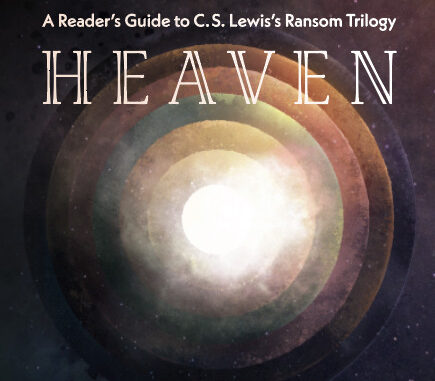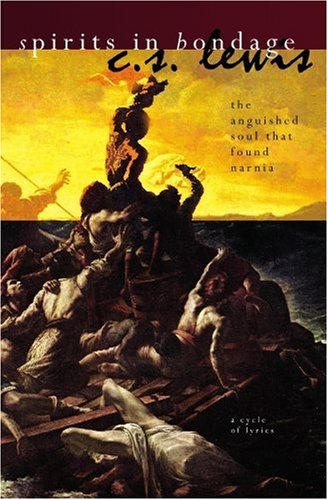
Summary:
In her new book, Christiana Hale takes readers on an exciting and insightful tour of the cosmos as depicted in CS Lewis beloved, yet enigmatic Ransom Trilogy. From the rainy streets of London, to the surface of Malacandra, to the floating lands of Perelandra, to the dreaded halls of the N.I.C.E., she takes readers on an in depth look at this trilogy probing many of the deep questions readers have had since the books were first published. This insightful book is one guide fans will find indispensable.
Review:
When I was in sixth grade, like Mr. Toad in the Wind in The Willows, I was fully taken by my own “mania”. Upon reading Lewis’ Narnian Chronicles, L’Engle’s A Wrinkle in Time, and seeing the Star Wars films in Elementary school for the first time, I was in love with fantasy and science fiction. Thus, by the time I entered Junior High I devoured every book I could in the library and book stores from the likes of HG Wells, Jules Verne and countless others. For Christmas in sixth grade, my mom’s gift to me that year were copies CS Lewis Ransom Trilogy. I loved Out of the Silent Planet straight away, finding Jack’s depiction of Mars as wonderful and real to me as Tatooine in Star Wars, Vulcan in Star Trek, or Krypton in Superman, and was immersed in the mysterious world of Venus in Perelandra. Of his trilogy, That Hideous Strength didn’t fully ensnare me under its spell until a second or third reading, only to fully be appreciated when I was in college and studied not only the Arthurian legends, but my imagination had long since experienced it’s second baptism through the work of Tolkien three years prior.
Thus, even for long time fans of CS Lewis, like myself, his Ransom Trilogy can be not unlike Tolkien’s The Silmarillion, a great work, a bit difficult to understand on a first cursory reading, but containing more meaning upon further examination. Additionally, like The Silmarillion next to The Hobbit and The Lord of the Rings, the Ransom Trilogy isn’t nearly as examined or celebrated in scholarly works as Chronicles of Narnia, or The Screwtape Letters. Thus, the Ransom books, like the Wardrobe in the Professor’s Spareroom beckons to readers, urging them to come in, needing a “Lucy” to guide us inside on our journey. Thankfully, Christiana Hale’s new book Deeper Heaven: A Reader’s Guide to CS Lewis’ Ransom Trilogy perfectly addresses that deficiency.
Hale begins our journey by unpacking the concept of the Medieval Cosmology of the universe that Lewis used to develop his trilogy. In our vastly scientific era, it’s a welcome boon to the readers as when most come across it, they are quick to dismiss it as pseudoscientific claptrap due to the heliocentric nature of the solar system. However, her aim is not to write a science book, but to go deep into Lewis’ unexplored mythology and thus we learn more not about the geography of these worlds but their nature and character, even comparing them to their mythical namesakes. When the Hubble telescope has captured stirring images of the heavens that feature a vibrant and colorful universe on par with a coral reef, or discovered that the Earth and indeed all the planets in our system “ring” like bells, myth best captures these images and renders them into language far better than facts and figures. Science may tell you what the universe is made of, but myth tells readers what the universe really is.
From there, she delves deeply into key themes, characters, and scenes in each of the volumes of the Ransom Trilogy. Readers are also given discussion questions in order to better help facilitate their understanding of the stories and probe their deeper meanings. Where the book really shines is in how perfectly she links That Hideous Strength with the other two volumes. For first time readers, the more earthbound finale feels out of place after spending time on Mars and Venus. Through her analysis we see that the final volume is about the Heavens coming down to Earth, helping the reader understand that there really was no better way for the series to end.
She also draws from the rich well of Lewis’ work, drawing parallels from his essays and the Narnia books, as well as the work of his contemporaries and his literary influences, including Bunyan, Dante, and Milton. Perhaps most controversial for some fans she draws considerable influence from Michael Ward’s book Planet Narnia that looked at how the seven Narnia books reflected medieval cosmology. I’ll admit that when I first heard the theory, I was skeptical at best, but in encountering it through a look at Lewis’ Ransom Trilogy, I must admit it is a compelling analysis and I am more than willing to look into it.
A book like this could easily feel bogged down by its immense weight, especially in trying to decipher some often difficult to understand texts. Thankfully, that is not the case here as Hale’s tone and writing style is very approachable to the novice readers of the Ransom series. Further, many of the connections and parallels she picks up on throughout the trilogy to works like The Divine Comedy are insightful and ingenious. Finishing her book makes me all too eager to reread the Ransom trilogy again just so I can come at it with a brand new and exciting perspective.
Christiana Hale’s Deeper Heaven is like a friendly guide at a local planetarium taking us on a tour of the Heavens, one I’m glad I took. For longtime fans of Lewis work, and those wishing to go beyond the world of Narnia, this is a welcome book worthy of any spot on their book shelf. I only hope this marks the beginning for more scholarship into The Ransom series.
Five out of Five shields.
Buy the book on Amazon.com



